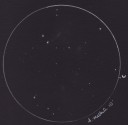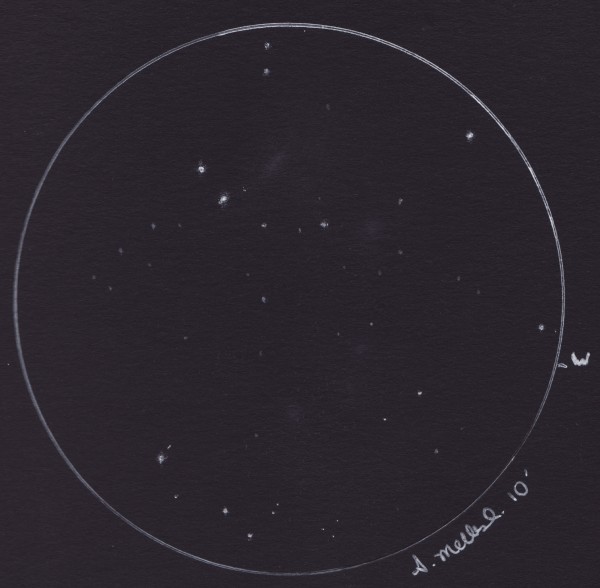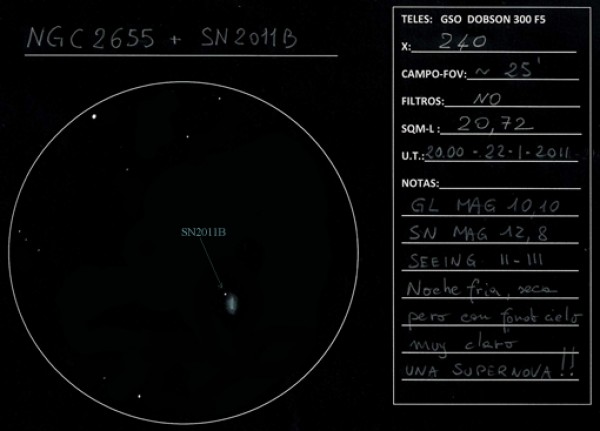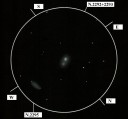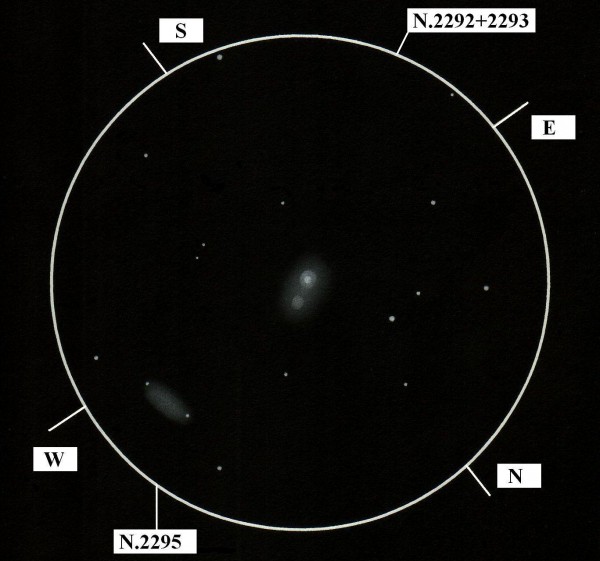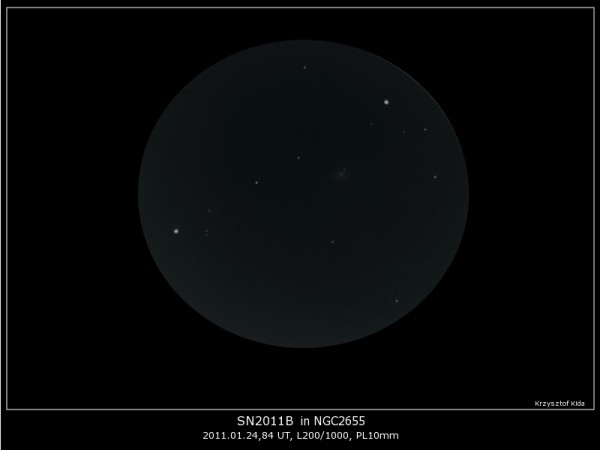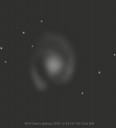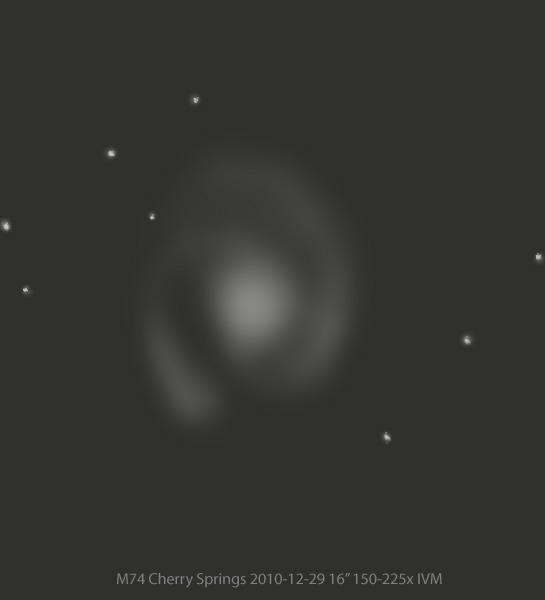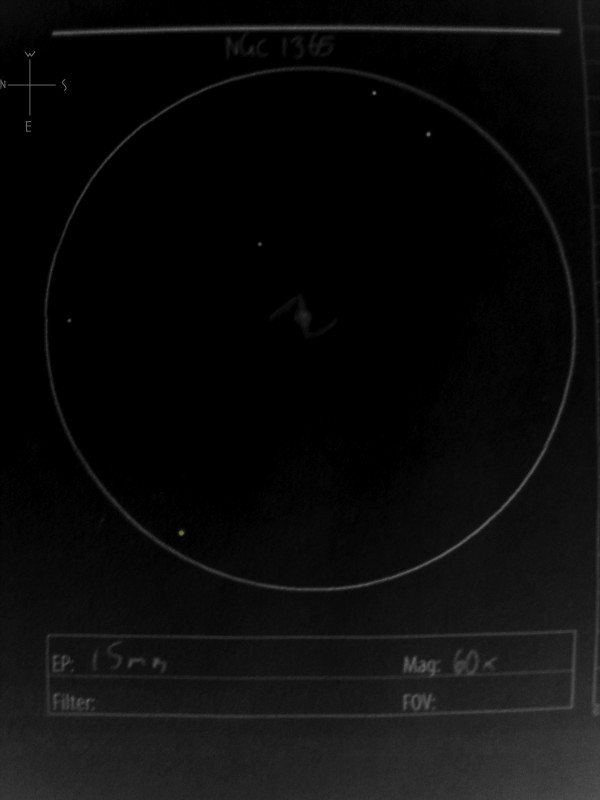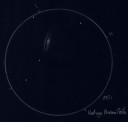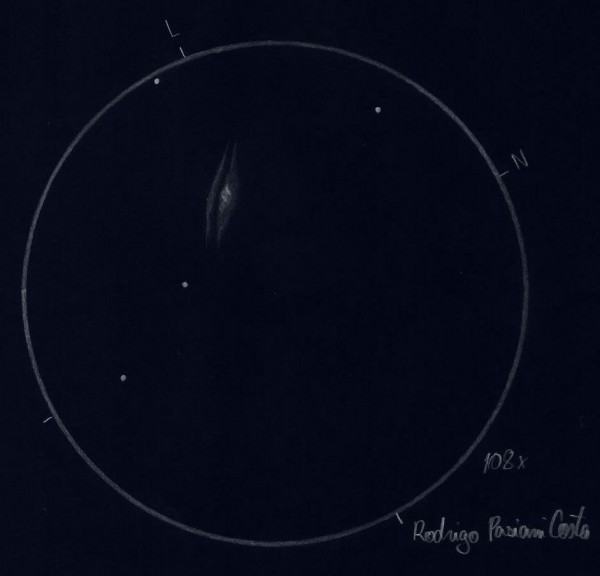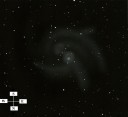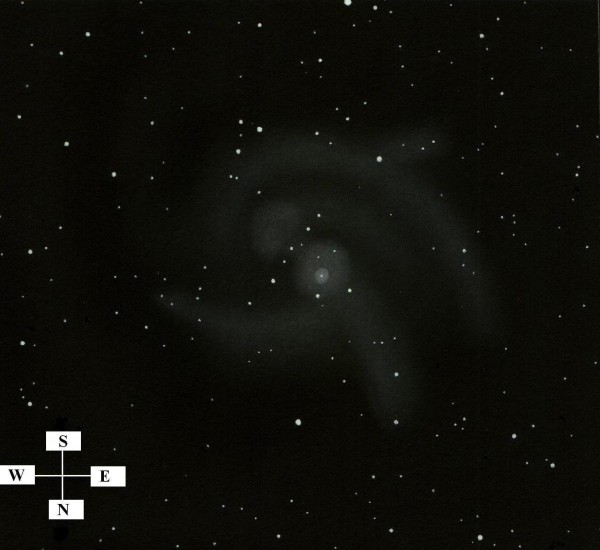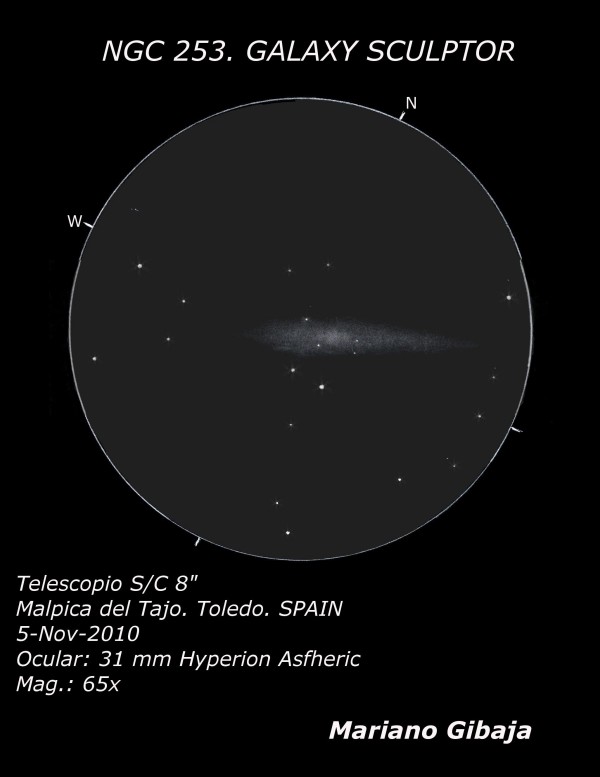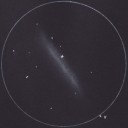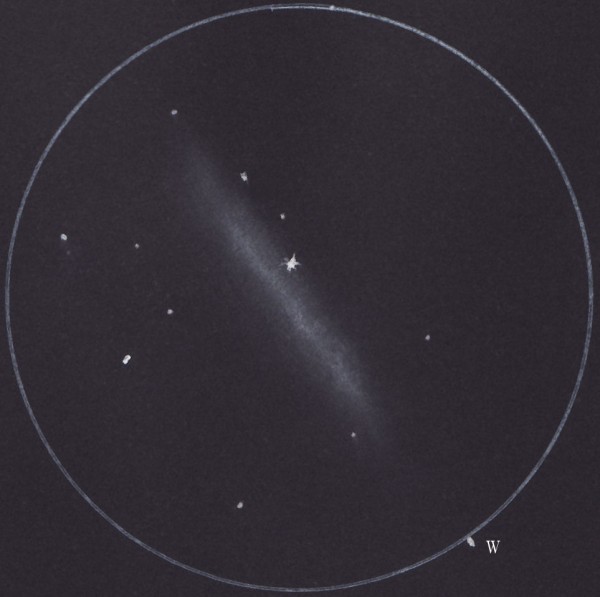NGC 2294/2291/2289/2288/2290
Galaxies
Gemini
12/12/10
56cm f5 dosonian telescope
Field: 17′
Magnification: 354x
Sky Quality Meter reading: 21:58
Black Canford paper
White pen
White pencil
White oil pencil
White pastel chalk
Paint brush
Blending stump
This was quite a nice collection of galaxies in Gemini that viewed well in the 56cm dob.
The brightest member of this group is NGC 2294, as is quite evident in the sketch.
Descending to the right is NGC 2291 a diffuse mag 14.0 galaxy, followed directly below about 6′ by two
quite faint and small galaxies NGC 2289/2288 which are only some 2′ apart.
The last object in this group is NGC 2290 another diffuse mag 14.0 galaxy about 1.0′ x 1.0′ in size.
This was a fairly faint group, but they were not overly challenging from a dark sky site.
I do not know whether any of these galaxies are in interaction, but looking at some DSS images of this
group it seems unlikely.
Scott Mellish
